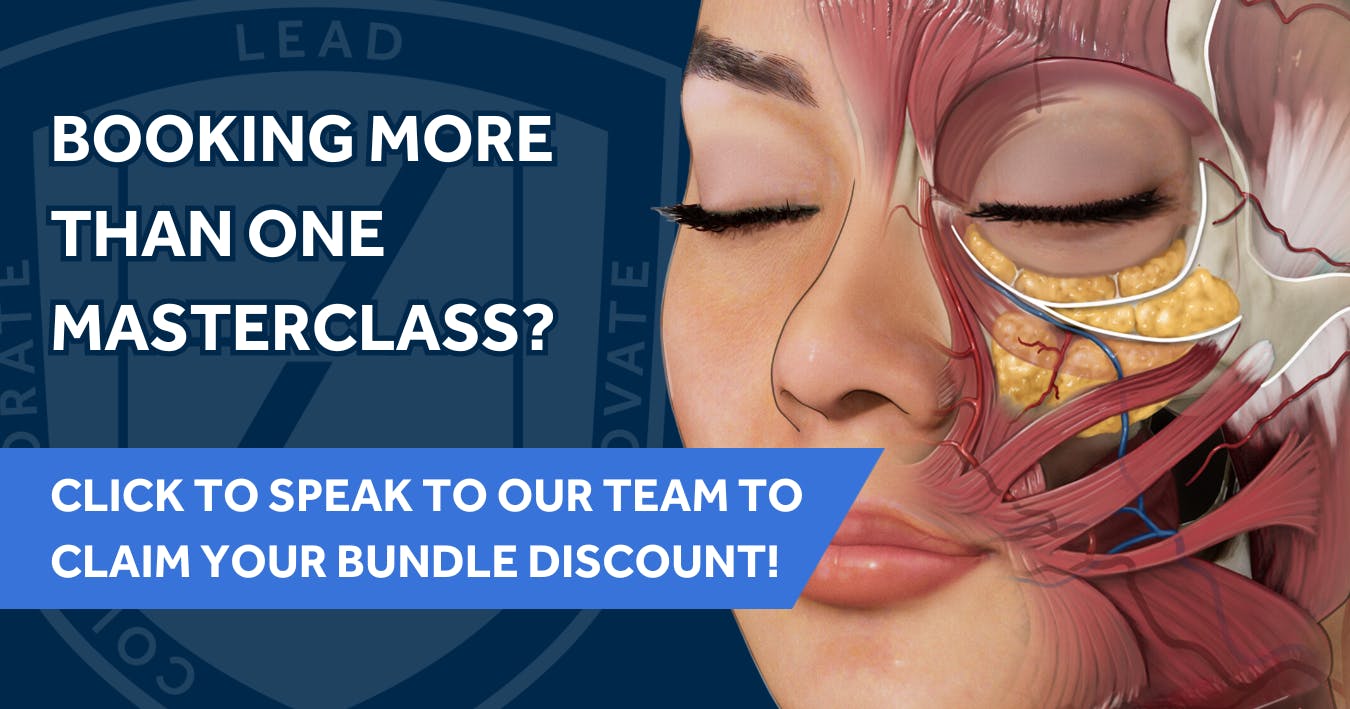Periorbital Rejuvenation Advice for Aesthetic Practitioners
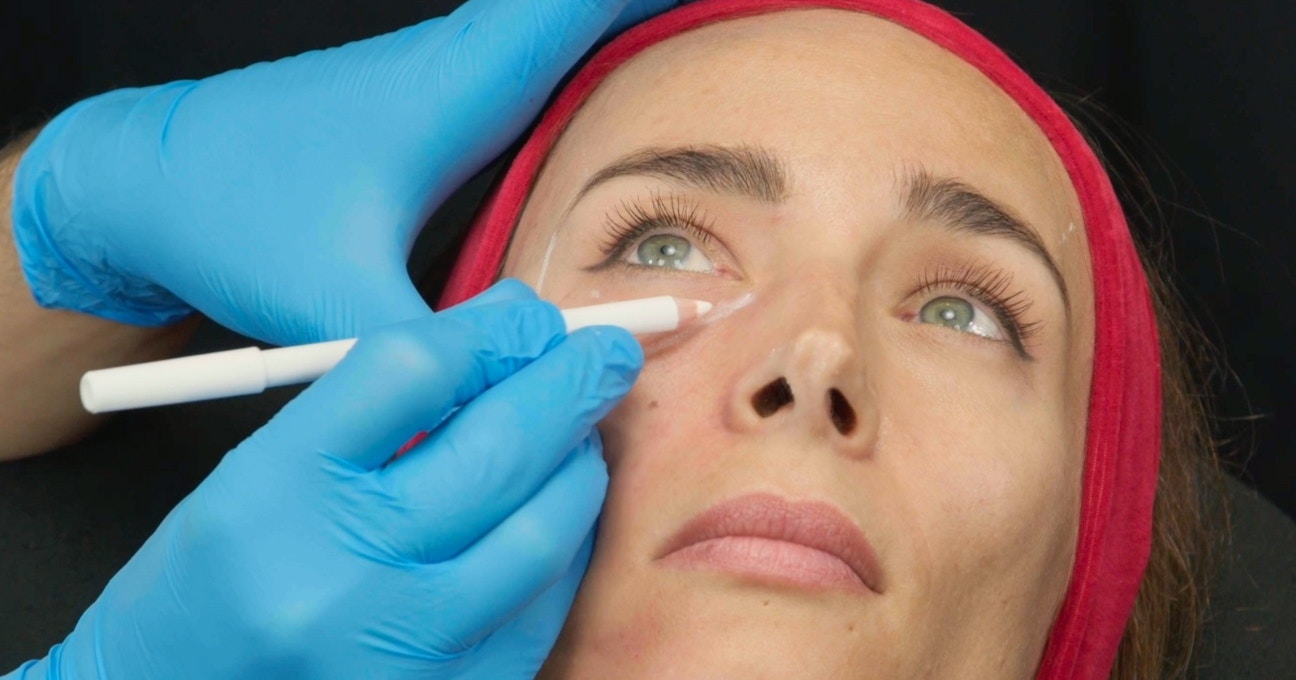
Periorbital rejuvenation is a key skill for aesthetic practitioners to learn. Why? Because of the positive impact it can have on the facial aesthetic of patients.
This region is also home to myriad common concerns as the area surrounding the eyes can show signs of ageing beyond just crow’s feet.
Skin laxity, tear troughs, oedema and dark circles can all contribute to an older appearance. These concerns also contribute to emotional attributes of the face, for example, looking tired.
This area is complex to treat so a detailed understanding is required, alongside specialist aesthetics training. It can benefit from a combined approach including topical skincare and skin treatments. However, in this article, we are focusing solely on injectable solutions.
To find out more about best practices in assessing and addressing the various forms of periorbital rejuvenation, we spoke to Dr Janine Rothburn. As a clinical trainer, cosmetic doctor, dental surgeon and aesthetic medicine specialist, she is well-placed to share her expertise on this pivotal subject.
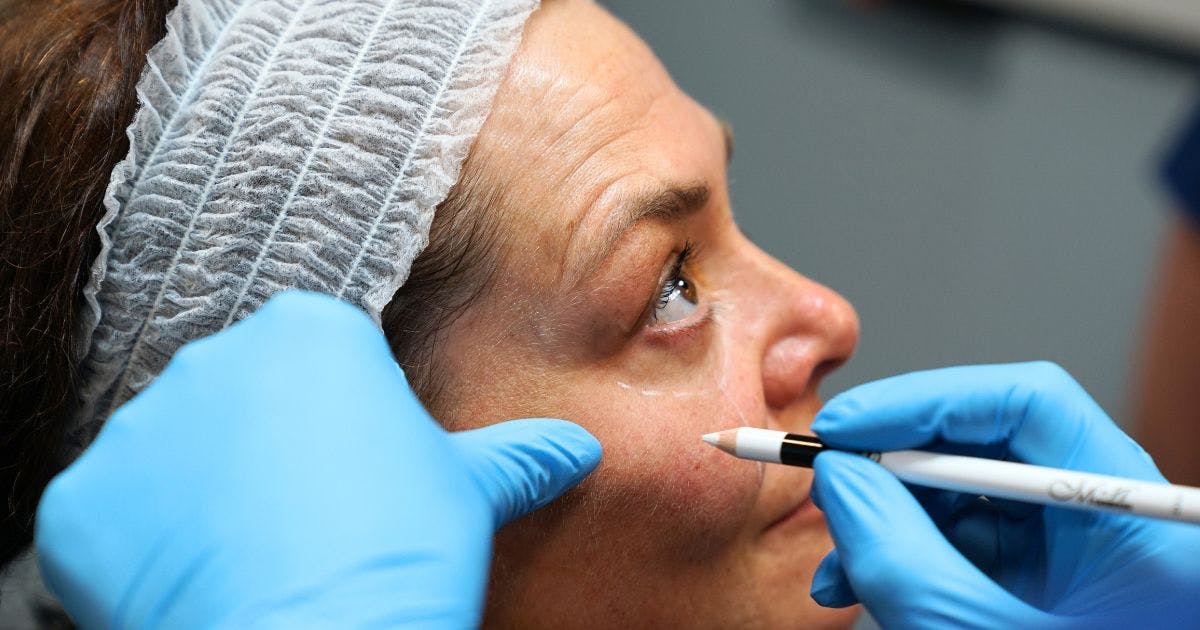
What treatments do you use for periorbital rejuvenation?
“Periorbital rejuvenation is one of the most important areas of rejuvenation of the ageing face. It involves treating around the eye area with a variety of treatments,” says Dr Janine.
She outlines the key periorbital injectable treatments as being:
- Botulinum toxin to the orbicularis oculi muscle for lateral canthal lines
- Treating tear troughs with filler
- Using polynucleotides for under eye concerns and crepey eyelids.
Treating crow’s feet with botox
“Toxin to the orbicularis oculi muscle can soften fine lines and wrinkles on the lateral aspect of the eyes. These lateral canthal lines are more typically referred to as crow’s feet,” she notes.
“Most patients are suitable for these toxin treatments, except those who are pregnant, breastfeeding, suffer from body dysmorphic disorder (BDD), those with neuromuscular disorders and those with any active infection.”
This treatment is great for more dynamic lines created on expression. It’s worth considering the positive emotional attributes conferred by these ‘smile lines’ when treating patients, especially those looking for more natural outcomes. This is something you’ll need to discuss with your patient before formulating your treatment plan, as part of your clinical consultation.
Toxin does not treat static lines well, especially if malar volume loss or lack of cheek support is a cause of these lines. Static lines are those which are present at rest.
Caution is also advised for dosing if the patient is susceptible to malar oedema. This is because the mechanical pump of the orbicularis oculi can help with lymphatic drainage around the region.
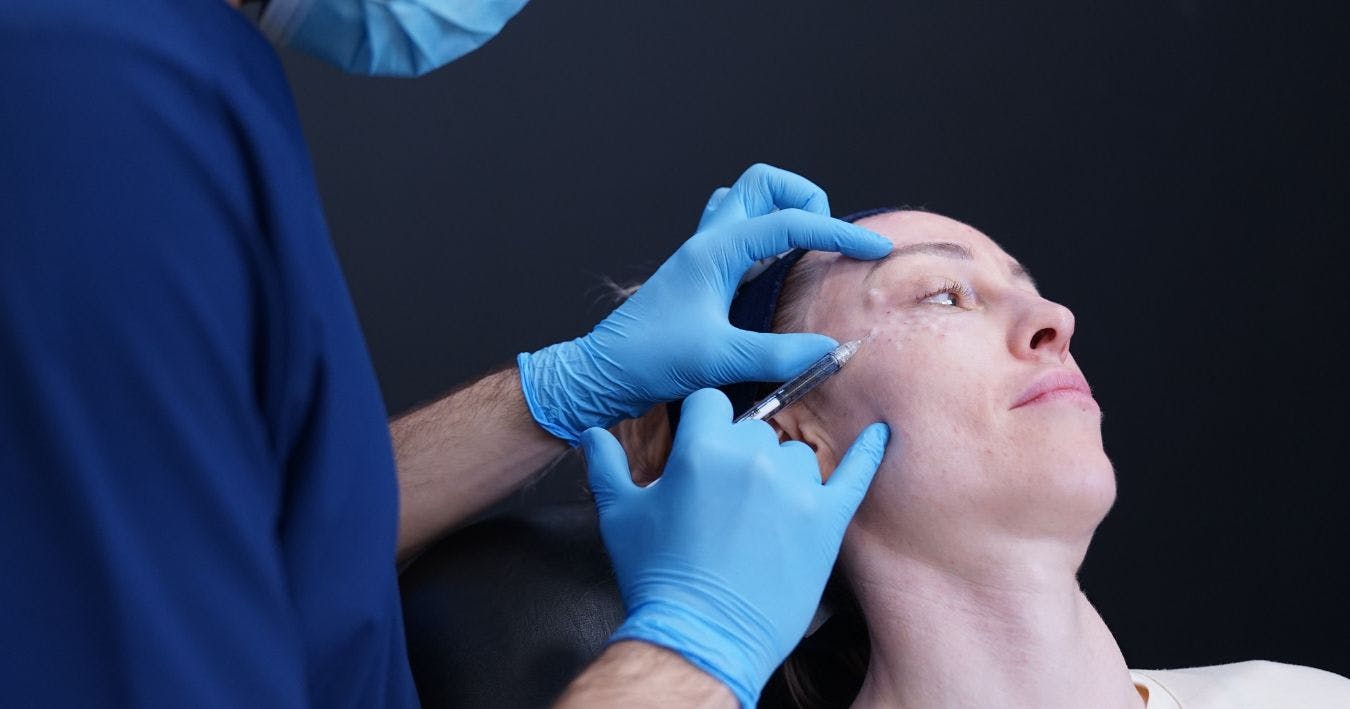
Addressing under eye concerns with tear trough filler or polynucleotides
Dr Janine stresses that “patients suitable for tear trough filler are those with a true under eye hollowing.
“Patients suitable for polynucleotides are those without true hollows but are looking for hydration, brightening and collagen stimulation to the periorbital region. Polynucleotides are also well-suited to patients who aren’t keen on tear trough filler.”
It’s entirely possible for patients to have both tear trough filler and polynucleotides, depending on their concerns. Tear trough filler is for rejuvenating hollows, whilst polynucleotides offer a range of skin benefits. So, pairing both can work well. You can find out more about this in our previous article When to Use Tear Trough Filler Versus Polynucleotides.
Crepey eyelids can be treated with polynucleotides
Polynucleotides can also be injected into the eyelids to help address crepiness and skin laxity. This treatment can provide localised hydration that may reduce the appearance of fine lines.
Periorbital rejuvenation injection techniques & approaches
Let’s explore each of the periorbital rejuvenation treatments Dr Janine has mentioned in more detail.
Botox injection techniques for treating crow’s feet
For crow’s feet botox you’re going to inject into the dermis superficially, approximately 1cm away from the orbital rim. The licensed dose for the treatment of lateral canthal lines is 4 units per point, at 3 points, giving a total of 12 units per side.
You can get further guidance and tips on this treatment in our article Periorbital Botox: How to Treat Crow’s Feet.
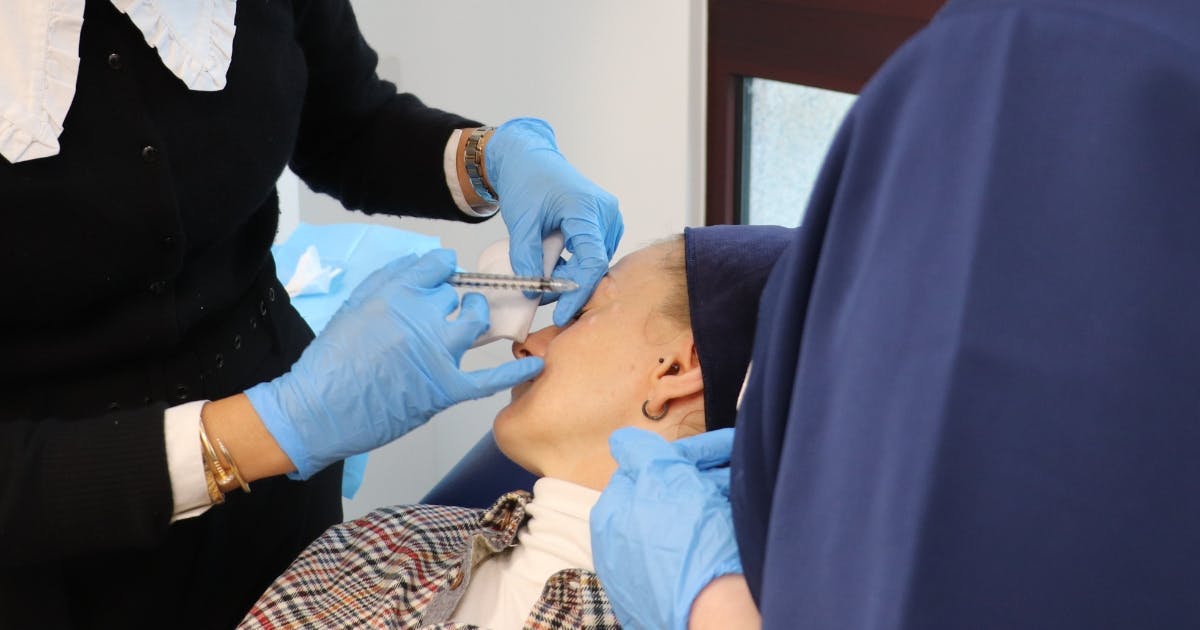
Tear trough filler approaches
You can treat the tear troughs with filler either directly or indirectly.
Indirect tear trough filler involves injecting the cheek. This is often known as a ‘mid-face treatment’. It requires treatment of the cheek apex, lateral zygoma and the medial cheek fat which supports the tear trough region. It’s usually the first, safer step managing the area should there be an indication to treat the area.
Direct tear trough filler involves injecting the tear trough, addressing volume loss by placing product deep in the region.
Our Tear Trough Filler Masterclass can help you to learn and develop your assessment skills, product choice, and injection techniques. Grounded in theory and facial anatomy knowledge, this dedicated session, with pre-course eLearning, will allow you to gain one-to-one mentorship when treating tear trough filler patients.
Do you use a needle or cannula for tear trough filler?
“Direct tear trough filler can be injected either using a needle onto periosteum or using a 22G cannula deep into layer 4,” advises Dr Janine.
For medial cheek fat restoration - an indirect tear trough treatment - a cannula is often preferred to avoid damaging the infraorbital neurovasculature. This is especially true for the novice cosmetic injector.
“As always, an aseptic technique should be used throughout but the choice of technique is down to the preference of the practitioner,” she confirms. “Cannulas can often be less traumatic with a reduced risk of bruising. However, needles can be regarded as more precise.”
It’s entirely feasible to to use a cannula for your direct tear trough treatment then switch to a needle for any final adjustments. This allows added precision for your finishing touches.
What’s the best type of filler for treating the tear troughs?
Dr Janine shares, “The best type of filler that’s suitable for treating the tear troughs directly is a cross-linked hyaluronic acid (HA) gel. The HA filler must be soft and pliable as the under eye area is very delicate, with thin skin and subcutaneous tissues.”
You’re looking for a filler product with a low G prime for the tear troughs. Learn more about G prime ratings in our article Dermal Filler: Know Your G Prime.
Tear trough filler injection techniques
When treating the tear troughs directly, you’re injecting into layer 4 below the orbicularis oculi muscle using small microboluses usually with a cannula.
For the more indirect lateral zygoma treatments, you can use superperiosteal boluses, or you can enter the prezygomatic space with a cannula.
One approach for indirect tear trough filler through medial fat restoration is injecting into layer 4 with a cannula.
In terms of the injection techniques for treating the tear trough in this way, you can use linear threads or a fanning technique. You can also use a supraperiosteal bolus with aspiration with a medium to high G prime product.
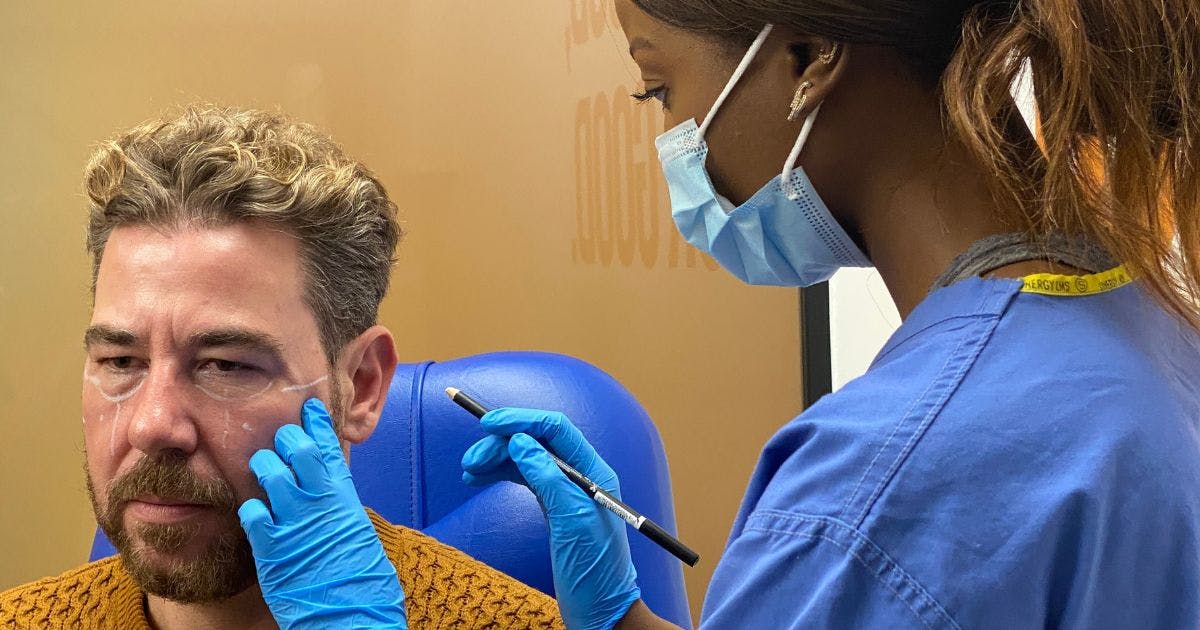
Polynucleotide injection techniques for treating the periorbital region
As mentioned earlier, we can use polynucleotide injections for both the under eye area and the eyelids. A deep dive into the theory and practical applications are taught in our Polynucleotides Training Course. This covers full-face polynucleotides as well as the periorbital areas.
This hands-on full day of training can be purchased as a standalone course or experienced as part of our comprehensive Combined Level 7 programme.
Polynucleotides were the breakout cosmetic injectable treatment of 2024, with high patient demand and good name recognition. This means that patients ask for the treatment by name, rather than by what type of outcome they’re looking for. The popularity, safety profile and ease of application make polynucleotides a fantastic addition to every medical aesthetic practitioner’s treatment menu!
Treating the under eyes with polynucleotides
As you’re targeting tissue that’s very superficial, intradermally, we recommend using a needle for more accurate delivery when injecting polynucleotides.
Micro-boluses or linear thread injection techniques are used to treat this region.
Polynucleotides for eyelid rejuvenation
Micro-boluses delivered using a needle provide a safer, more accurate polynucleotide delivery for the eyelids.
Common periorbital mistakes injectors make and how to avoid them
Tear trough filler
“Less experienced injectors often overfill the tear trough area,” highlights Dr Janine.
“The under eye region is a very delicate area and the key to good tear trough filler is the ‘less is more’ approach. If the periorbital region is overfilled, it’ll result in swelling and puffiness plus possible lumps that become more noticeable when the patient smiles. The aim of tear trough filler treatment should be to improve but not eliminate the area completely.” Slightly under-filling will help you to avoid this issue.
“Aesthetic practitioners should be aware that not everyone is suitable for tear trough filler. If patients have increased skin laxity, poor skin quality, festoons or malar bags, they are not suitable for tear trough filler.”
The importance of proper patient selection cannot be understated when it comes to tear trough filler.
Periorbital botulinum toxin injections
Getting your needle depth right is imperative for solid delivery of botox injections. When treating the crow’s feet, there are a few common errors that aesthetics practitioners should avoid.
- Don’t inject botox too close to the orbital rim otherwise the ocular muscles may be affected and the eye’s aperture function may be negatively influenced.
- Avoid injecting too deep at the lower aspect to avoid negatively affecting the smile muscles.
- You should also ensure you don’t inject too deeply at the upper aspect, so you avoid impacting the lacrimal gland.
Want to learn more about periorbital rejuvenation?
If you’re looking for reputable medical aesthetics training that will teach you how to administer periorbital treatments for rejuvenation in the safest, most effective way, we can help. Give our Course Advisors a call and they’ll listen to what you’re hoping to achieve, then match you with the best aesthetics course for your needs.
If there’s a specific query you’d like help with, try searching the Aesthetic Medicine Articles section of our website.
We have a range of helpful interviews with our faculty members, including many periorbital topics. Whether you’re searching for tear trough help, botox needle depth advice or Dr Tristan Mehta’s video demonstration of mid-face rejuvenation paired with an eye lift, we’re confident there’ll be something of interest!
All information correct at time of publication
Download our full prospectus
Browse all our injectables, dermal fillers and cosmetic dermatology courses in one document
By submitting this form, you agree to receive marketing about our products, events, promotions and exclusive content. Consent is not a condition of purchase, and no purchase is necessary. Message frequency varies. View our Privacy Policy and Terms & Conditions
Attend our FREE open evening
If you're not sure which course is right for you, let us help
Join us online or in-person at our free open evening to learn more
Our Partners












STAY INFORMED
Sign up to receive industry news, careers advice, special offers and information on Harley Academy courses and services


